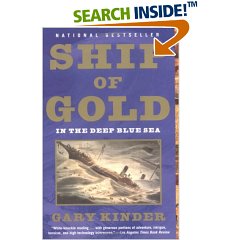The story of Adeline and Ansel Easton
At Panama, the Eastons crossed the Isthmus in new open-air rail cars–enjoying the short and uneventful 48-mile trip to the Caribben port city of Aspinwall. They they boarded the 272-foot wooden-hulled Atlantic steamer SS Central America bound for New York–a 9-day journey with a one day stopover at Havana.
The trip aboard the Central America was the last leg of the Easton’s voyage. Of the more thaqn 581 passengers aboard the steamer, many were California miners going to their homes back east–gold hunters who had searched for the yellow metal for years.
Many carried great personal wealth. Some women tucked $20 gold pieces in bags they guarded at all times. Men wore belts stuffed with gold dust while one fellow, Captain Badger of San Francisco, concealed $20,000 in gold in a carpet bag that became very heavy.
There was also a commercial gold cargo aboard, plus a secret shipment, together totaling about 21 tons–gold bars ranging from 5 ounces to 80 pounds, including the largest Gold Rush relic, weighing 1,100 troy ounces–and gold coins struck on Montgomery Street at the new San Francisco Mint.
The Central America was truly a “Ship of Gold,”
the title of author Gary Kinder’s 1998 best-selling book.
(Next: Part 3)

